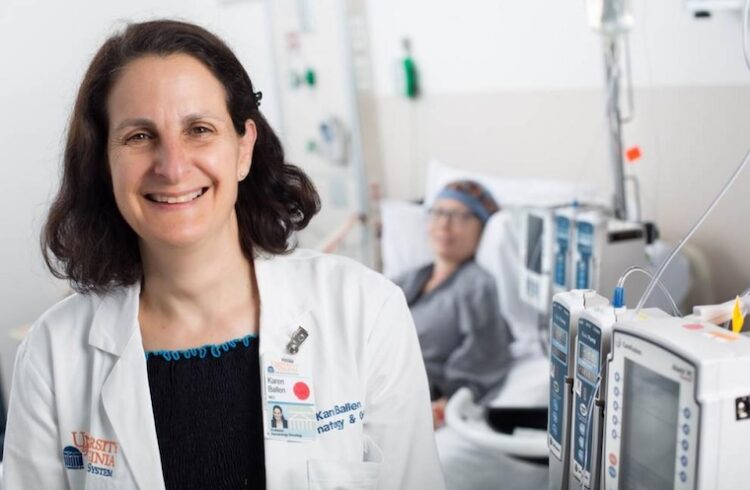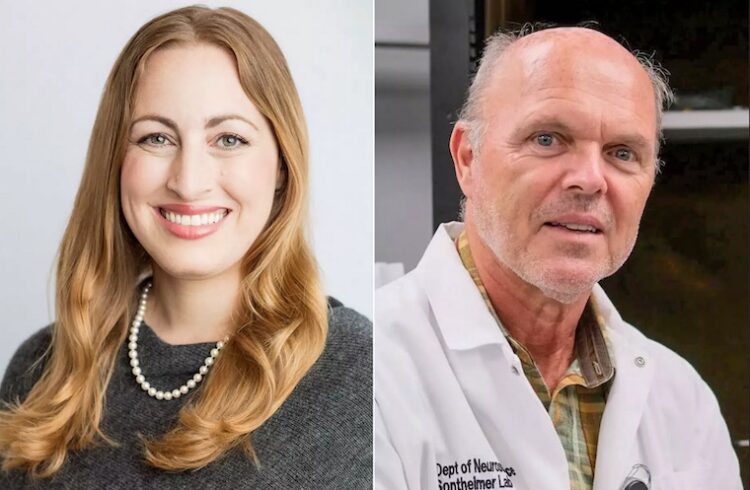
Imagine a vitamin that directly extends your life span. It’s not available yet, but a discovery that a cousin of niacin prolongs life span in yeast brings the tantalizing possibility a step closer.
The research, reported in the May 4 issue of Cell, shows that a new vitamin can extend life span in yeast cells, much like calorie restriction does in animals. This research could pave the way for developing supplements to benefit humans. Dr. Jeffrey Smith, a co-lead author and University of Virginia Health System researcher on the team, notes that “down the road, we hope to use this compound to mimic calorie restriction and possibly help in preventing some aging-related diseases.”
“As part of this research, we have also identified a new biochemical pathway in yeast, a relatively simple single-cell organism. This newly discovered pathway has the potential to similarly affect life span in other organisms, including worms, fruit flies, and mice,” says Smith, UVa associate professor of biochemistry & molecular genetics. “Now we know there are two pathways that can function in the life span expansion of these cells.”
Radical calorie reduction can extend life. Dieting or fasting mice live longer and lowering the glucose that yeast grow on extends their life span, according to Dr. Charles Brenner, associate professor of genetics and of biochemistry at Dartmouth Medical School, who co-led the research team.
“If we could do this in humans — give people a drug or vitamin that would mimic effects of calorie restriction without having to skip lunch — we would be able to provide some of the benefits of calorie restriction, which are pretty striking in model organisms,” said Brenner.
Many benefits depend on a family of proteins called sirtuins, dubbed anti-aging gene products for the important roles they play in longevity and energy expenditure, although the precise mechanisms are still being figured out.
The team found that providing the newly discovered vitamin activates the yeast anti-aging gene product Sir2, which resembles sirtuins found in humans. The new work builds on Brenner’s prior discovery of the vitamin, termed NR (nicotinamide riboside), a natural product found in milk. Like the B3 vitamin, niacin, NR is a precursor to a versatile cellular factor that is vital for all life.
The factor, called NAD, short for nicotinamide adenine dinucleotide, is elevated by calorie restriction in the brain and liver of rodents. So the researchers set out to develop an intervention to elevate NAD levels, using yeast cells, whose genes are easy to manipulate. “It’s surprising that no one was able to elevate NAD with a small molecule before,” Brenner said.
The team discovered two pathways that allow yeast to raise NAD levels with NR, improve their control of gene expression and live longer in the presence of high glucose. One of the pathways is new; the other was previously identified by Brenner’s lab.
At the molecular level, elevating NAD to turn on Sir2 actually enables the yeast to silence genes that are not supposed to be expressed. In any organism, not all genes are on at once; in yeast, there are sets of genes that Sir2 normally represses.
“We showed that that we could improve Sir2-dependent gene silencing with NR and increase the longevity of yeast grown in high glucose conditions,” Brenner said.
To test for Sir2 gene repression, the investigators found conditions in which wild-type cells can’t accomplish normal gene silencing. Then, when they take up NR through one of the pathways Brenner’s team discovered, Sir2 gene silencing is restored, and yeast are rejuvenated. Yeast cells formerly capable of dividing only 13 times, divided more than 23 times when given NR.
Deletion of either pathway makes NR only half as effective as it is when both pathways are intact. So yeast cells seem to use both pathways equally well to lengthen their life span. The first NR pathway, described in 2004, consists of a gene common to yeast and humans. In fact, that gene is activated in damaged neurons in order to allow NR to protect against loss of axons. The second NR pathway involves three yeast genes, two of which are found in humans.
Granted that the human anti-aging apparatus is more complex, but animal studies indicate potential. Perhaps the best known sirtuin activator is the red wine compound resveratrol. Overfed mice on high dose resveratrol have healthier livers, better endurance and possibly longer life span. While resveratrol and NR work through different mechanisms to increase sirtuin activity, the two compounds could be complementary or synergistic.
UVa Health System researchers in 2004 learned how resveratrol helps to starve cancer cells by inhibiting the action of a key protein that feeds them. They used physiologically-relevant doses of resveratrol and found dramatic effects on human cancer cells.
More testing remains for NR in humans. As a natural product found in milk, the researchers expect NR to be much safer than most drugs, and to be a more specific remedy than most vitamins.
Though aging itself is not a disease, Brenner anticipates applications in conditions associated with aging including help for neurodegenerative diseases and metabolic syndrome (which can be a risk for diabetes), and elevating levels of good cholesterol. There are also indications that NR could be a treatment for one type of Candida yeast infection.
Team members are Peter Belenky, Katrina L. Bogan, and Charles Brenner of Dartmouth Medical School, and Julie M. McClure, Frances G. Racette, and Jeffrey S. Smith of the Department of Biochemistry and Molecular Genetics at the UVa Health System. The research was supported by the National Institutes of Health.


